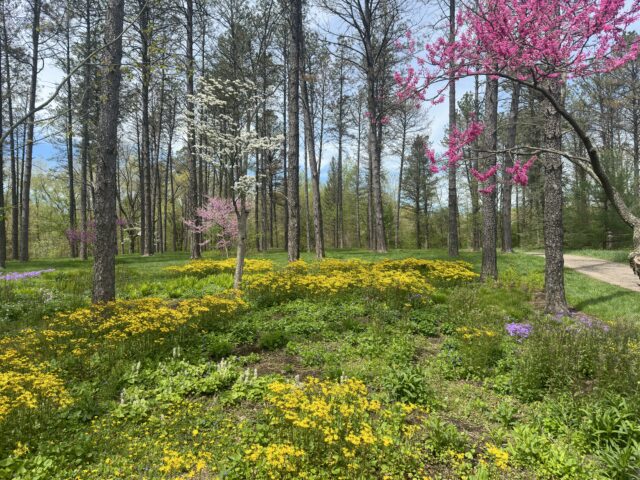
If you have been hiking on the Bole Woods loop in the last two years, you may have noticed some strange white pipes sticking out of the ground, or perhaps a group of eager young ecologists measuring trees or counting seedlings. “What is this all about?”, you may ask yourself. This is Working Woods, a 76-acre living laboratory where a 40-year-old forest is currently undergoing a transformation, and in the process is teaching us how to manage Ohio’s valuable forests.
In recent decades, much of Ohio’s agricultural land has been abandoned; left to succeed back to forest. The composition of these post-agricultural forests is often drastically different from the old-growth forests that preceded them, with this agricultural legacy influencing everything from the trees that make up the canopy, to the smallest microbes in the soil. If you walk through one of these post-agricultural forests, you may notice many closely spaced, thin trees. These trees are all about the same age and represent just a few species. They grow slowly due to intense competition with the trees around them. You will also see dense thickets of invasive shrubs such as multiflora rose, glossy buckthorn, honeysuckle, and privet. These invasive shrubs suppress native vegetation like the spring ephemerals we all know and love. These young forests also lack many essential features that provide habitat for wildlife and support biodiversity such as standing snags (dead trees), decaying down wood, and canopy openings created by the natural die-off of older trees.
Here in the Research Department’s Community Ecology lab, we study forest health, restoration, and best management practices. We’re using Holden’s Working Woods, to explore how forest management practices, particularly canopy thinning and invasive species removal, can help improve the health of these forests and return them to a state more closely resembling old-growth forests. We collect data on invasive species cover, rates of tree growth, seedling recruitment, herbivory, plant diversity, and light levels in order to quantify the impacts our treatments have on the forest. The research done in Working Woods lies at the interface of basic and applied ecology – the work we are doing here not only informs forest management practices, but also helps us understand the drivers of change in forests and the forces that maintain biodiversity. This research will increase our ability to promote healthy forests here at the Arboretum, across Ohio, and beyond.
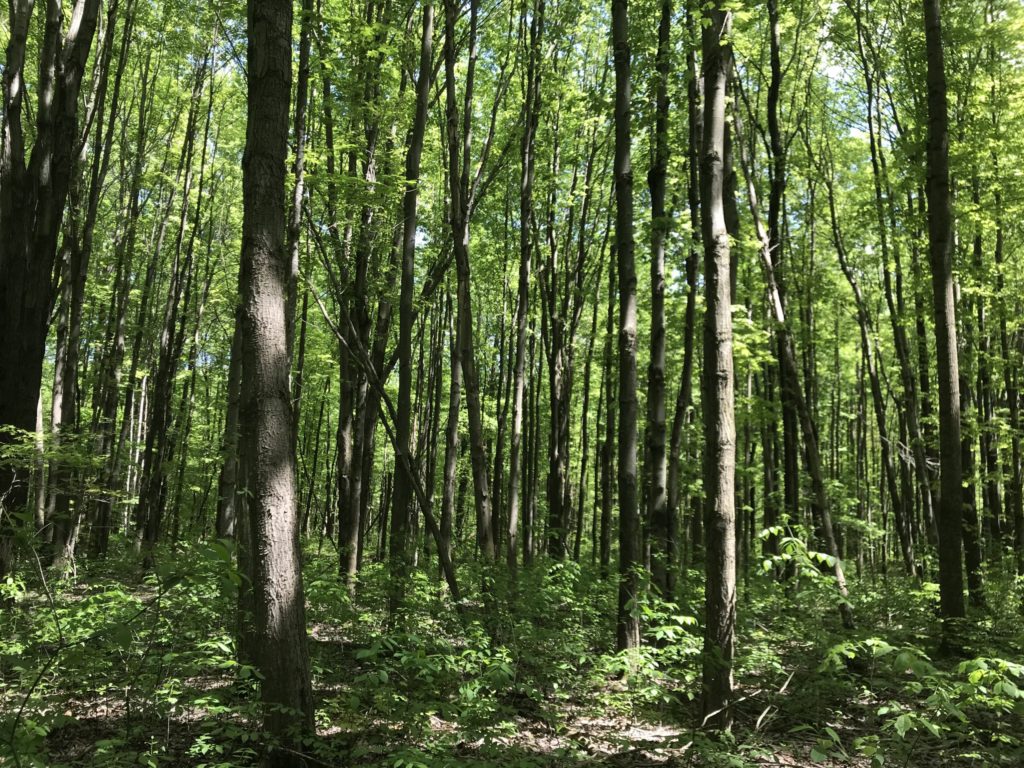
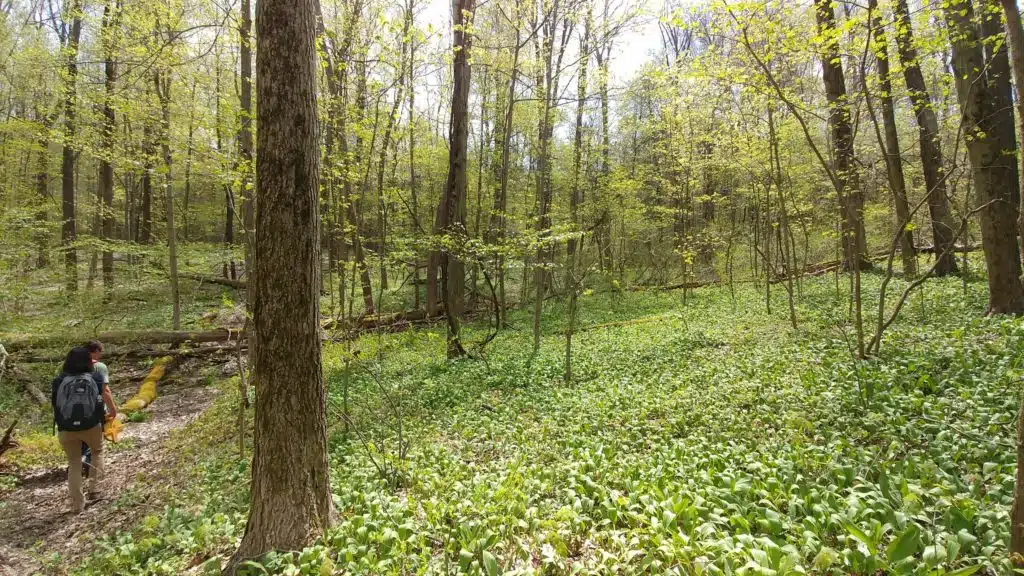
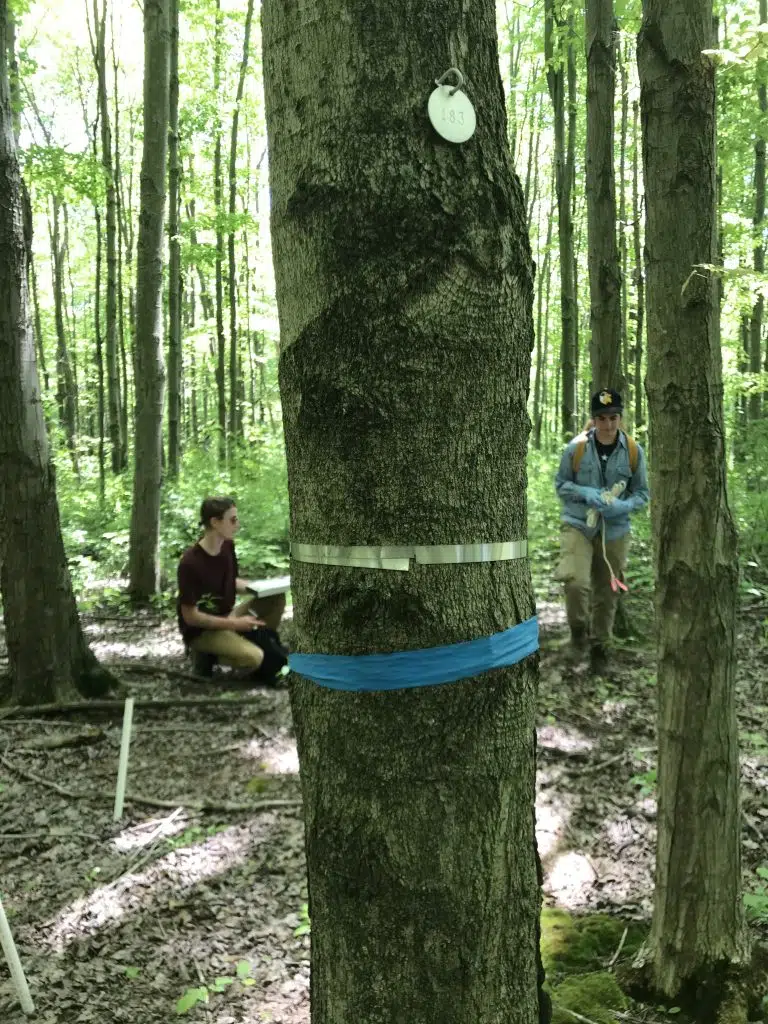
Interns Brooke Seitz and Caleb Lumsden collect data in Working Woods. This tree is one that we are closely monitoring. We collect data on herbaceous plants and seedlings growing around the tree and use that metal band to track weekly growth of the tree

We have over 450 Target Trees in Working Woods, each with its own unique ID so we can monitor the growth of this tree for years to come.

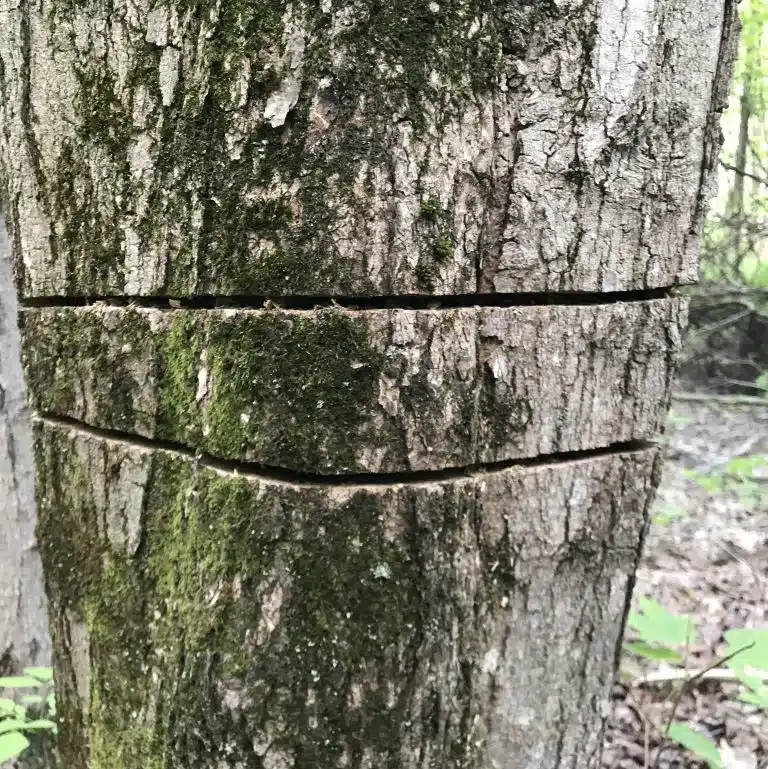
We thin the canopy by selectively girdling (cutting a ring around the tree – pictured here) or felling (cutting down) select trees. Girdling causes the tree to die slowly and will provide the standing snags that this young forest currently lacks. Felling is done when girdling may cause the tree to fall in an unsafe or destructive way. Felling provides decaying wood on the forest floor. Though I am a tree lover as much as the next and hate to see trees die, the process of thinning the canopy provides room for new trees to establish while providing important wildlife habitat.
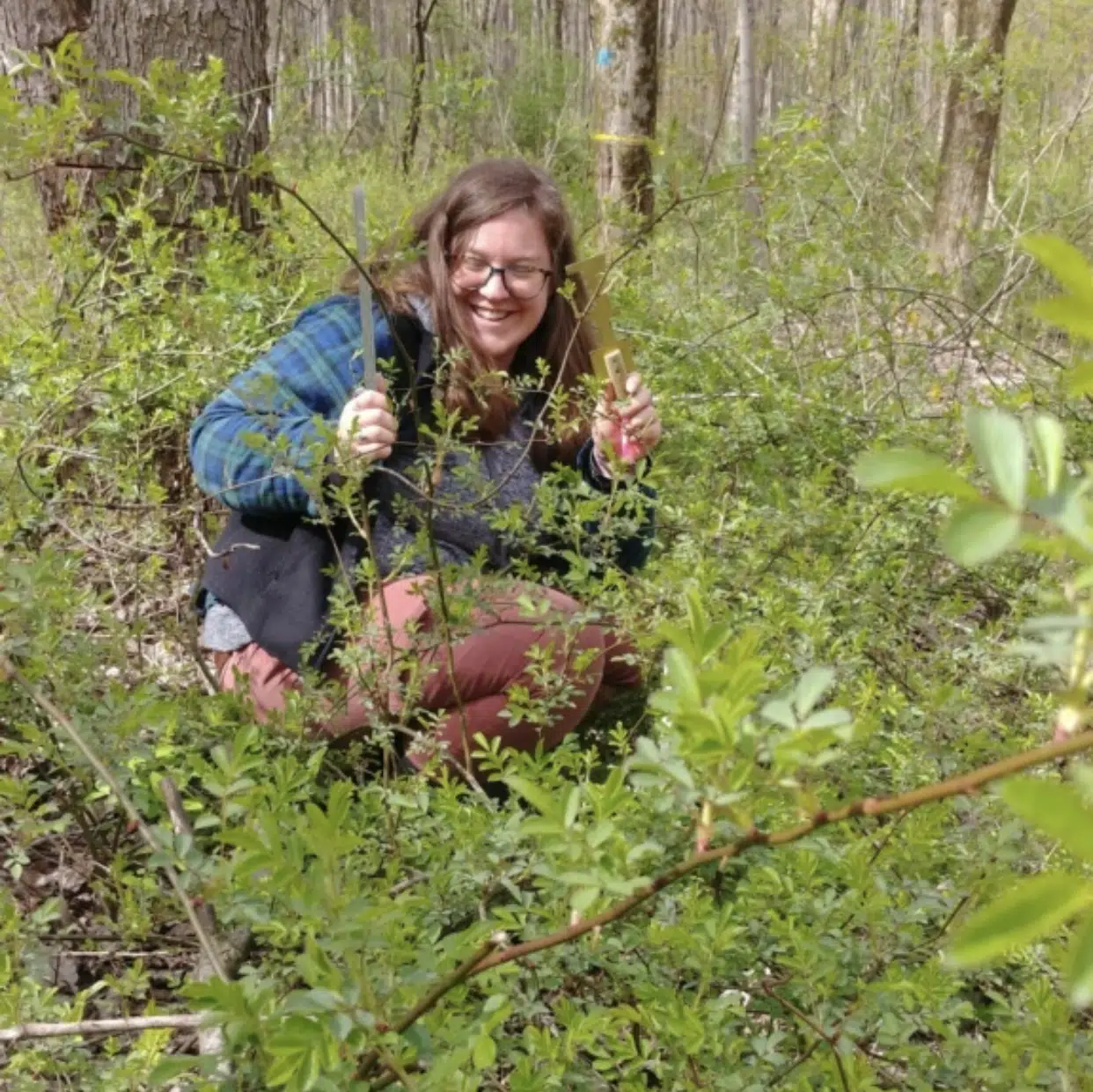
Rory Schiafo, Research Specialist, measures and counts multiflora rose stems around one of our Target Trees. We can use this data to understand how invasive species cover affects understory plant dynamics and to gain a better understanding of the best practices to manage this invasive species.
Rory Schiafo
Research Specialist




